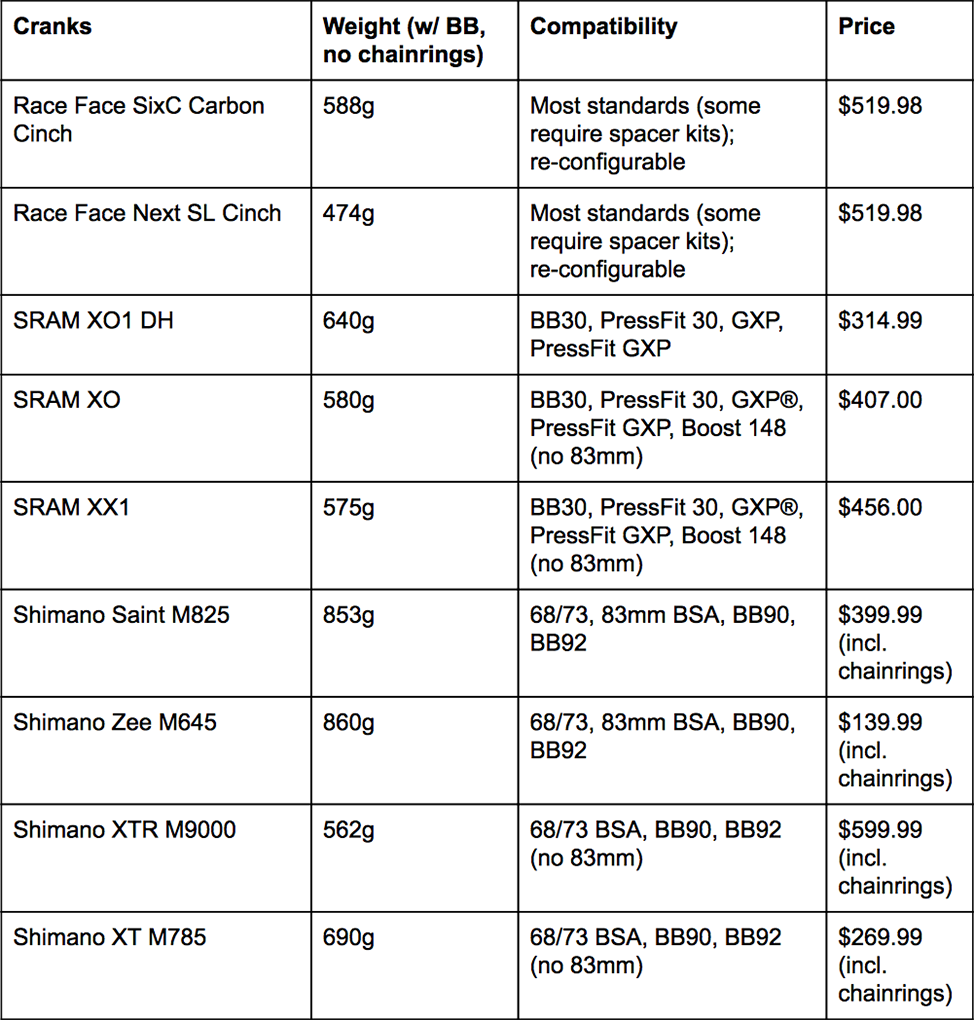The Cranks
At first glance, the SixC cranks are more or less straightforward, very high-quality carbon cranks. They’re hollow, very light, and the finish on them is super clean looking. They come with a vinyl sticker to ward off heel rub, and they also include little rubber booties to help protect the ends.
But the coolest part of the cranks isn’t completely obvious. These days, Race Face isn’t the only company out there making a hollow carbon crank. But the challenge lies in attaching the aluminum bits to the carbon—most importantly, the pedals thread into an aluminum plug that’s bonded to the carbon.
It’s that interface—the bond between the aluminum and the carbon—that seems to be the difficult point. It’s the primary place where I’ve seen failures occur in other carbon cranks. The SixC’s main competitor is probably the SRAM XO DH cranks. And while it’s relatively rare, I’ve seen those aluminum plugs rip out of the XO cranks, destroying the crank and usually causing a crash.
That mode of failure certainly isn’t limited to the SRAM cranks. Aluminum inserts ripping out has always been a struggle with carbon cranks, primarily because getting a good bond between the aluminum and carbon is difficult.
On the SixC cranks, Race Face employs a patented design that they’re proud of, but also fairly hush-hush about. Essentially, they’ve figured out that the bonding problem arises during the curing process of the carbon when it’s cooling down. As things cool and shrink, the bond between the carbon and aluminum insert can weaken, so Race Face designed an insert that actually locks into the carbon more tightly as everything cools and contracts.
While Race Face was understandably hesitant to distribute actual pictures of their design, here’s a diagram from their pending patent on the design.

So does it work? I can’t say definitively, but mine have been shrugging off pedal strikes without a problem, and I’ve yet to hear of any issues on the internet rumor mill. We’ll have to wait and see how they do over the long term, but so far, so good.
Performance
All of that technical wizardry doesn’t do much good if the cranks don’t work well. But fortunately, they do. Installation was entirely uneventful, save for a quick adjustment to the bearing preload ring to take out a bit of side to side slop. Once that was squared away, I got nary a creak, pop, or protest out of the cranks during a couple weeks of hard downhilling.

I’ve smacked the pedals and the cranks themselves into a variety of trailside debris, so far without issue. I’ve scratched them up a bit, but from exterior appearances, they seem to be handling the flogging a bit better than other carbon cranks.
In terms of stiffness, I’m not going to act like I can really tell a huge difference. They’re very stiff, and there’s no perceivable flex. Just leaning on them with my body weight, they seem to be a touch stiffer than SRAM XO DH’s.
Comparisons
In terms of performance, it’s tough to compare cranks. It really comes down to a numbers game of weight vs. price, with some compatibility questions thrown into the mix. So here’s a chart with an assortment of front runners in the world of cranksets.
A quick note on weights: getting reliable, comparable weights for cranksets is difficult, since listed weights may or may not include BB’s and chainrings, and it’s not always clear what length or spider configuration was on the scale. For that reason, the weights below are approximate (with the exception of the SixC cranks, which lists our measured weight of the cranks tested).
I really just want my cranks to spin smoothly, hold up to abuse, and not weigh a lot. The Race Face SixC cranks easily check all of these boxes: they’re significantly lighter than the competition, preliminary impressions indicate that they’re stronger than the competition, and they can be reconfigured to fit different bikes. They’re not the cheapest option on the market, but I’m pretty comfortable saying that, in the category of “carbon cranks that can take abuse,” these are the best I’ve seen.

